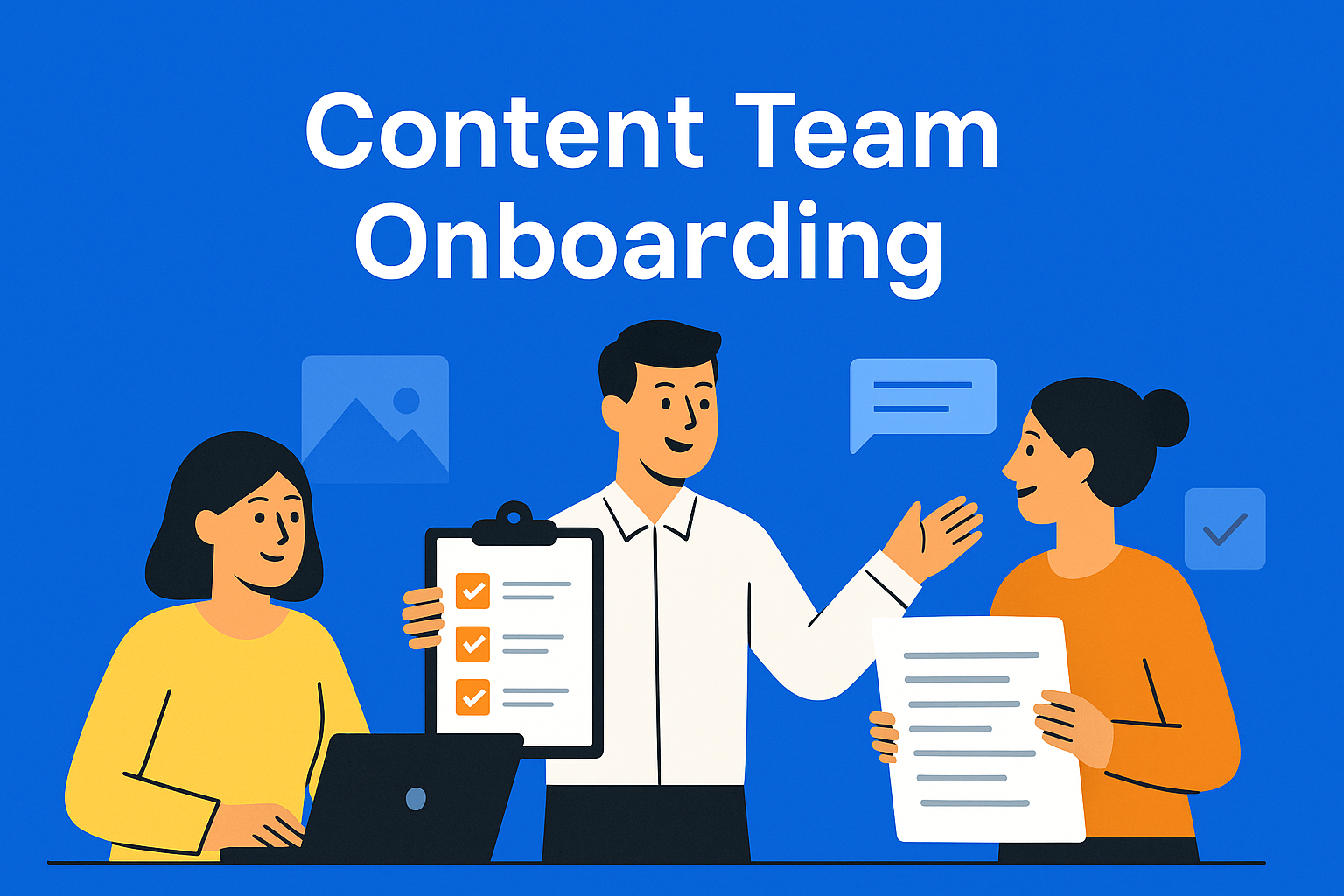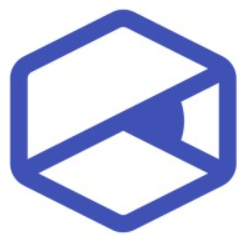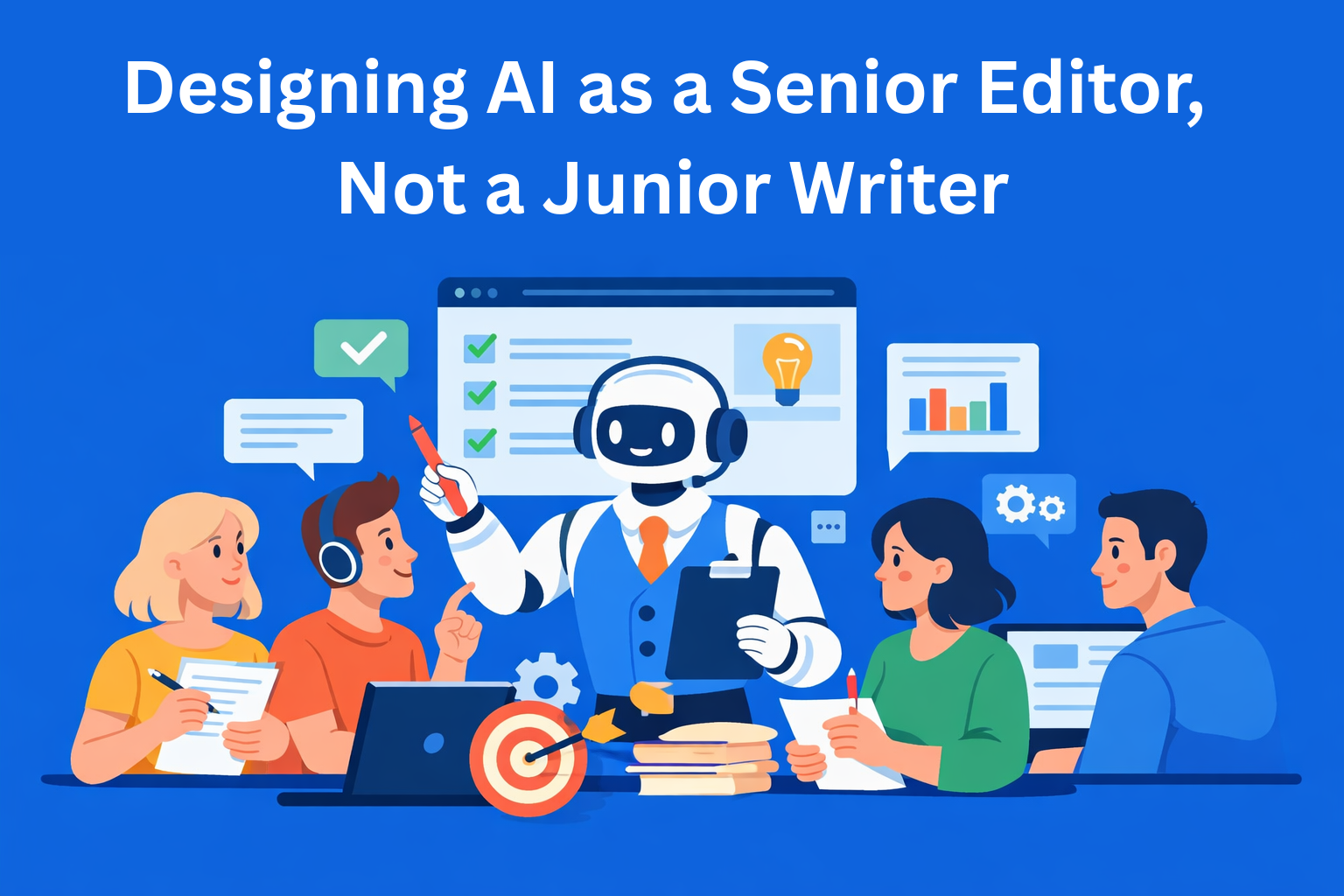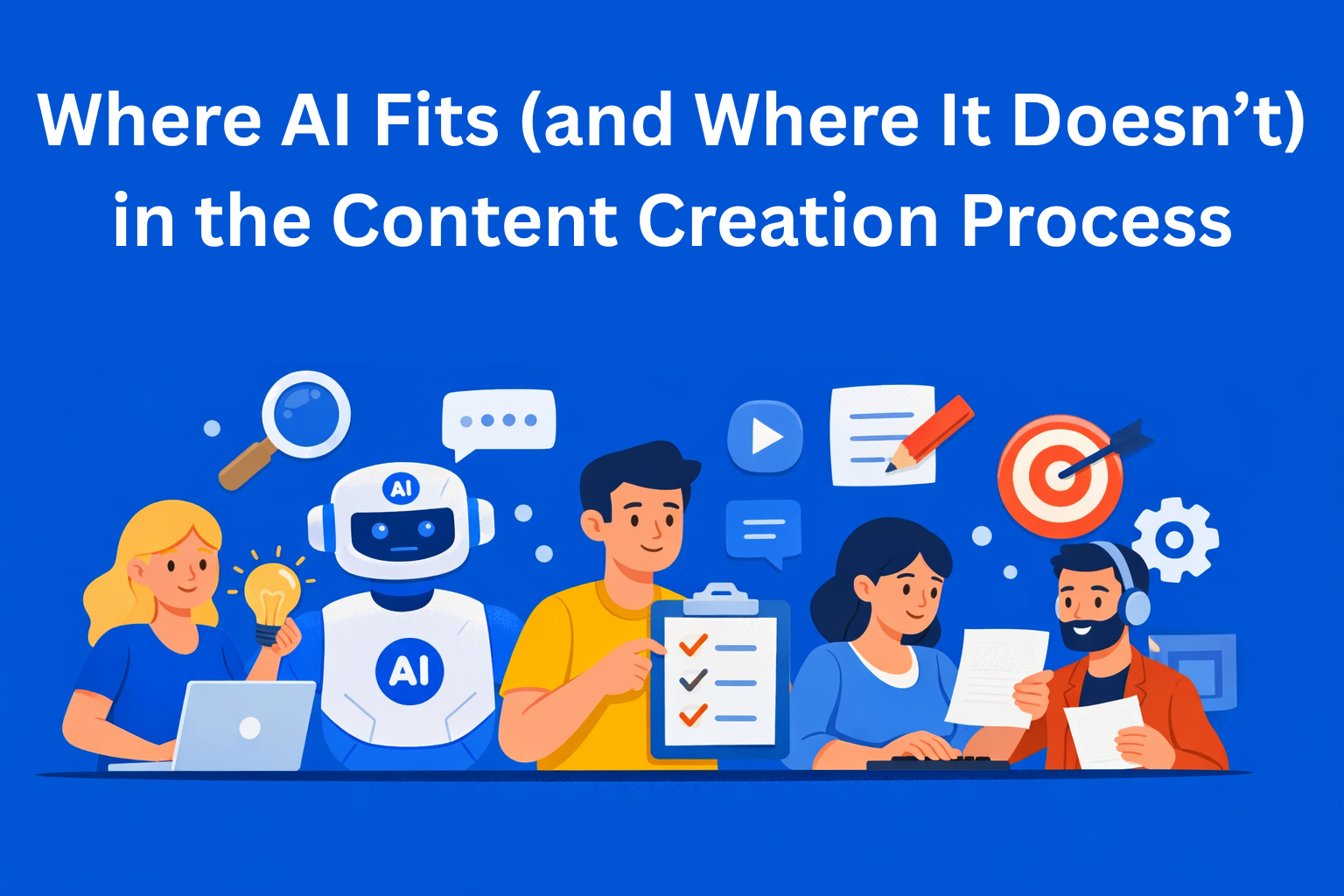How to Onboard New Team Members Into Your Content Workflow
Struggling to onboard new content team members efficiently? Learn how to build a clear, scalable content process and how EasyContent helps you centralize tasks, streamline collaboration, and speed up onboarding.

Bringing someone new into a content team sounds easy on paper: give them access, assign a task, and let them work. Right? Well, not exactly.
For content managers, heads of content, and marketing leads, onboarding isn’t just about tool access and a Slack invite. It’s about making sure that new team members fully understand your content strategy, workflow, and brand tone, without draining the rest of your team’s time.
Let’s break down why onboarding in content teams often feels hard, what mistakes to avoid, what actually works, and how a platform like EasyContent can help.
Key Takeaways
- Onboarding is more than tool access - it requires clarity on workflow, roles, and expectations.
- Common mistakes include lack of documentation, unclear briefs, and feedback that comes too late.
- A great onboarding process includes structure - workflow diagrams, templates, training tasks, and clear communication.
- Platforms like EasyContent help streamline onboarding by centralizing tasks, content, and collaboration in one place.
- Successful onboarding leads to faster ramp-up times, better content quality, and less stress for the whole team.
Why Content Onboarding Feels Hard (Because It Is)
Let’s be honest: content team onboarding is one of those hidden stress points. You don’t notice it until a new person joins and everything slows down.
A new team member might ask where briefs are, not know the expected tone or structure, create off-brand content, or get lost between 5+ tools.
And that’s assuming they even understand how your content process works.
Unlike dev teams, who often have documentation, defined roles, and formal onboarding, content teams tend to work in a more “organic” way. Which works fine… until someone new arrives.
So yes, onboarding is hard. Not because the new hire lacks skills, but because the process is rarely clearly defined.
Common Mistakes When Onboarding Content Creators
If you’ve ever onboarded someone new and felt frustrated a week later, you’re not alone. Here’s what usually goes wrong:
1. No Centralized Process
Most teams juggle Google Docs, Sheets, Slack, Trello, email... and expect new people to “figure it out.”
2. Undefined Expectations
What does “done” mean for an article? What’s the review process? Who gives the final approval?
3. No Brand or Style Guidelines
Writers can’t match your tone if they don’t know what it is. If your brief is just one sentence, don’t expect magic.
4. Feedback Comes Too Late
If comments only show up at the end, time and energy get wasted. Feedback needs to be baked into the process.
What a Good Onboarding Process Actually Looks Like
Want new team members to contribute by week one? Here’s what they need:
A Clear Workflow Structure
Show them how your content process flows from idea to publication. Who writes the brief? Who writes the content? Who reviews? Who publishes?
Use diagrams, a kanban board, or even a Notion doc - anything’s better than leaving them to figure it out alone.
Documentation and Templates
Provide templates for briefs, writing style, brand tone, SEO best practices, and good content examples.
Even better - store all of it inside the tool your team uses to create content. Don’t make people dig through folders.
Training Tasks With Support
Assign a simple task with a clear reviewer. Let them jump in quickly, but keep feedback loops short and supportive.
Tool Walkthrough
Explain what tools you use, what each is for, and who to ask when something breaks. Avoid tool overload.
And yes, your platform choice really matters. Which brings us to…
How EasyContent Simplifies Content Team Onboarding
Let’s talk solutions.
One big reason onboarding gets messy is because content lives everywhere: Slack, Google Docs, email, WordPress, Trello... your team ends up playing detective.
EasyContent brings all of that into one structured, collaborative space, and that changes everything when onboarding someone new.
Here’s how:
Centralized Workflow With Role-Based Access
New members see only what they need. No information overload. You define who does what at every step.
Built-In Briefs and Templates
Create briefs that include tone, structure, SEO notes, CTAs, word count ranges, and more. No guesswork.
Real-Time Collaboration and Change Tracking
New writers get feedback directly inside the content, just like in Google Docs. Mentors can comment, suggest edits, or approve with ease.
Deadlines and Dashboards
Everything is visible and organized. Assign tasks, track progress, and approve content without endless emails.
One Unified Workspace
No jumping between platforms. New members work inside EasyContent: from brief to draft, comments, deadlines, and approvals - all in one place.
Tips for Content Managers: Make Onboarding Stick
Even with the right tool, onboarding needs the human touch. Here’s how to make sure your new team members settle in smoothly:
Standardize Before You Automate
Define your processes first. Then use EasyContent (or any tool) to make them repeatable.
Treat Onboarding Like a Product
Build it once and improve over time. Ask new hires for feedback after their first and third weeks.
Use a Phased Approach
Week 1: orientation and one small task
Week 2: collaborative writing
Week 3+: independent work with light feedback
Document Everything
Even a basic Notion page or internal EasyContent doc helps a lot. If you’ve said something twice, write it down.
Final Thoughts
Onboarding new content team members doesn’t have to be painful.
Yes, it takes some initial work. But with a clear process, the right support, and a structured platform like EasyContent, onboarding becomes:
- Faster
- Scalable
- Way less stressful for your whole team
If your current onboarding feels chaotic, it probably is. The good news? You can fix that with clarity, structure, and the right tools.
EasyContent won’t onboard new people for you, but it gives you the framework to do it the right way.






